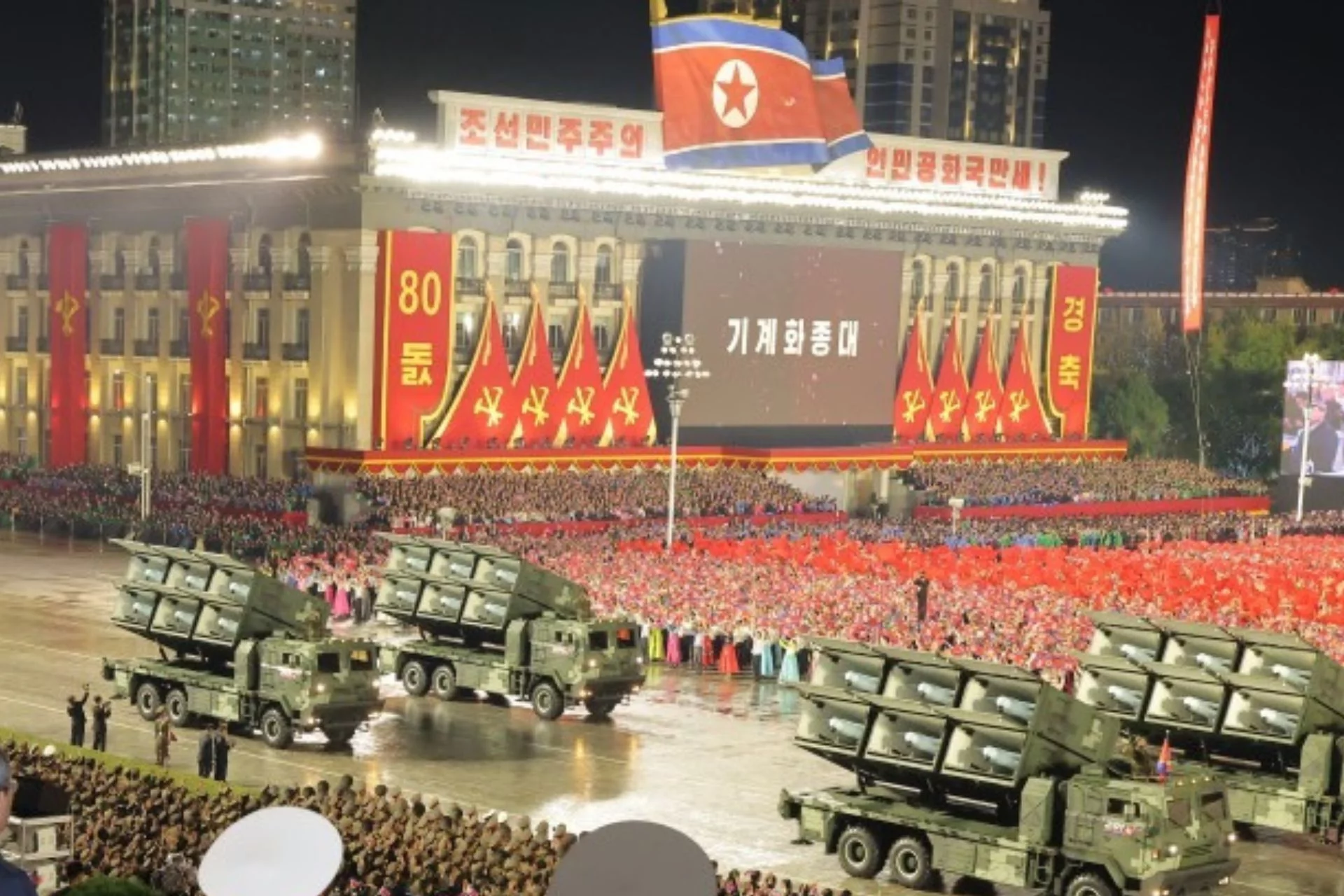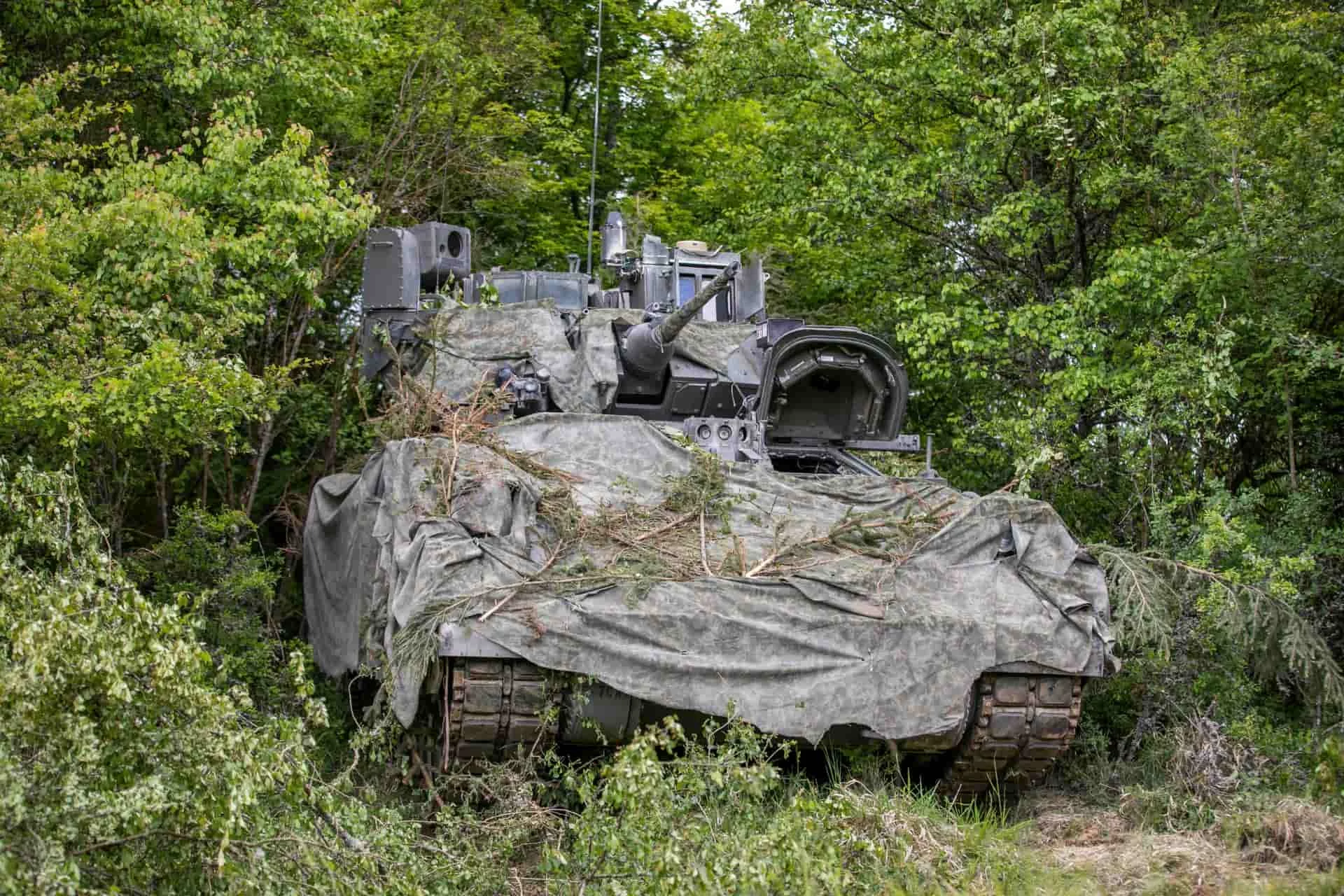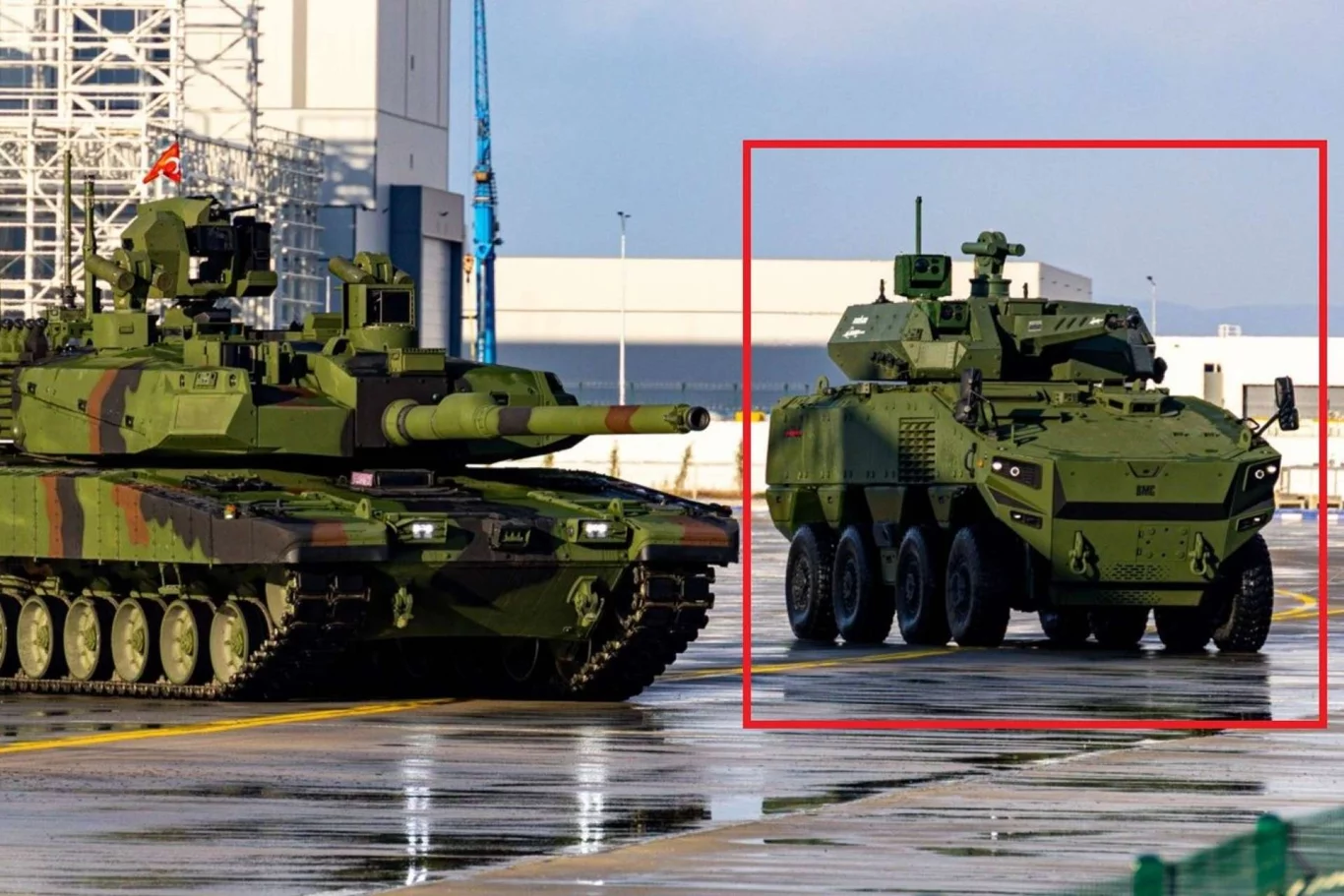In a dramatic display of military might amid pouring rain and flashing lights, North Korea has once again captured the world’s attention with its latest technological advancement. On October 10, 2025, during a grand nighttime parade in Pyongyang commemorating the 80th anniversary of the Workers’ Party of Korea, the reclusive nation rolled out a sophisticated launcher for what experts are calling a Harop-type loitering munition. This public debut, overseen personally by Supreme Leader Kim Jong Un, marks a significant escalation in North Korea’s unmanned aerial vehicle (UAV) capabilities, transitioning from mere prototypes to what appears to be a fully deployable system designed to challenge South Korean defenses and send ripples through international security circles.

The newly unveiled Harop-type loitering munition launcher on display during the Pyongyang parade.
Loitering munitions, often dubbed “suicide drones” for their kamikaze-like operational style, represent a cutting-edge evolution in modern warfare. Unlike traditional missiles or drones that follow predetermined paths, these weapons can hover over a battlefield for extended periods—sometimes hours—scanning for targets with advanced sensors before diving in for a precise, explosive strike. The concept draws inspiration from Israel’s renowned Harop system, developed by Israel Aerospace Industries, which has proven its effectiveness in conflicts around the globe by targeting high-value assets like radar installations and command centers. North Korea’s version, first hinted at in workshop prototypes back in August 2024, now seems poised for real-world deployment, showcasing the regime’s rapid progress in reverse-engineering and adapting foreign technologies despite stringent international sanctions.
The parade itself was a spectacle of pomp and power, held in Kim Il Sung Square under the glow of massive floodlights and against a backdrop of cheering crowds waving flags and flowers. Amid a lineup of intercontinental ballistic missiles (ICBMs), hypersonic weapons, and other advanced systems, the Harop-type launcher stood out for its tactical ingenuity. Mounted on a rugged 6×6 wheeled carrier vehicle with an armored cab for crew protection, the system features two superimposed rows of three launch containers each, totaling six ready-to-fire cells. This configuration allows for rapid salvo launches, potentially overwhelming enemy air defenses in a saturation attack. Each container is designed to hinge open prior to launch, with a tilting frame that elevates the drones for a clean ejection, ensuring the pusher propellers clear the edges without damage.
Visually, the drones themselves bear a striking resemblance to the Israeli Harop: a compact delta-wing design for aerodynamic efficiency, small foreplanes for enhanced maneuverability, and dual vertical fins at the wingtips for stability. At the nose sits an electro-optical turret, a critical component that enables “man-in-the-loop” control. This means operators can receive real-time video feeds, make last-minute adjustments, or even abort the mission if circumstances change—adding a layer of precision and flexibility that’s invaluable in dynamic combat scenarios. While official specifications from Pyongyang remain classified, analysts draw parallels to the Harop’s capabilities: endurance spanning several hours, a range potentially exceeding 100 kilometers, and a warhead equivalent to light explosives optimized for penetrating sensitive targets without excessive collateral damage.

Vehicles carrying the new drone launchers parade through rain-soaked streets in Pyongyang.
This reveal builds on North Korea’s broader push into unmanned systems, a trend that has accelerated under Kim Jong Un’s leadership. Just a year prior, in 2024, state media showcased airframe prototypes inspired not only by the Harop but also by Russia’s Lancet (known as Hero in some contexts), indicating a diversified approach to drone warfare. The progression from static displays to mobile launchers suggests an industrialized production line is now in place, focusing on simplicity: basic airframes, reliable propulsion, mission-critical electronics, and off-the-shelf sensors. Such designs lower costs and facilitate mass production, allowing North Korea to equip its artillery brigades and maneuver units with these assets for integrated operations alongside counter-battery radars and intelligence, surveillance, and reconnaissance (ISR) drones.
Tactically, the Harop-type system offers multifaceted advantages that could reshape conflicts on the Korean Peninsula. In the initial phases of any hypothetical campaign, it excels at Suppression of Enemy Air Defenses (SEAD), homing in on radar emissions to neutralize early warning systems and fire control units. Deeper into enemy territory, it can loiter over key areas, striking opportunistic targets like artillery batteries, command posts, communication hubs, or supply convoys with minimal warning. Even in maritime environments, these drones pose a low-cost threat to naval vessels by targeting sensors, antennas, and masts—potentially disabling ships without sinking them outright. The containerized, mobile setup enhances survivability: units can disperse across rough terrain, set up in minutes from roadsides or hidden sites, fire their payloads, and relocate before counterstrikes arrive. This mobility complicates enemy targeting and amplifies the psychological impact on adversaries.
For South Korea, this development rings alarm bells, intensifying the need for robust, layered air defenses. Seoul’s military will likely prioritize enhancements in low-altitude surveillance, deploying more passive sensors, electronic warfare jammers, and counter-UAV systems to detect and neutralize these threats. The drones’ ability to operate under GPS jamming—relying on inertial navigation and visual guidance in the final approach—further challenges existing defenses, forcing a reevaluation of interception priorities and resource allocation. Broader regional implications are equally concerning: Japan’s Self-Defense Forces and U.S. assets in the Pacific may need to adapt strategies, considering North Korea’s growing arsenal could target allied bases or carrier groups.

A wider view of the military parade showcasing North Korea’s latest weapons, including the new launcher.
Beyond the battlefield, this unveiling carries commercial and diplomatic undertones. Despite UN sanctions prohibiting arms exports, North Korea has a history of supplying weapons to sympathetic nations and non-state actors seeking affordable, high-impact technologies. The global market for loitering munitions is booming, driven by conflicts in Ukraine, the Middle East, and elsewhere, where such systems have demonstrated cost-effectiveness against expensive armored vehicles and infrastructure. Pyongyang’s version could appeal to buyers in Africa, the Middle East, or Latin America, providing a revenue stream to fund further military advancements and circumvent economic isolation.
Critics argue that this parade is as much propaganda as progress, aimed at bolstering domestic morale and deterring foreign aggression. Kim Jong Un, dressed in his signature black suit, waved to adoring crowds from a viewing platform, reinforcing the narrative of self-reliance and invincibility. Yet, the technical details revealed suggest genuine capability growth, fueled by illicit technology transfers, indigenous innovation, and alliances with nations like Russia and Iran. As tensions simmer on the peninsula—with recent border incursions and rhetorical escalations—this new weapon adds fuel to an already volatile fire.
In conclusion, North Korea’s Harop-type loitering munition launcher isn’t just another parade float; it’s a harbinger of evolving asymmetric warfare. As the international community watches closely, questions linger: How soon will these systems be operational? What countermeasures will allies develop? And could this spark a new arms race in Asia? Only time will tell, but one thing is clear—Pyongyang is determined to punch above its weight on the global stage.




